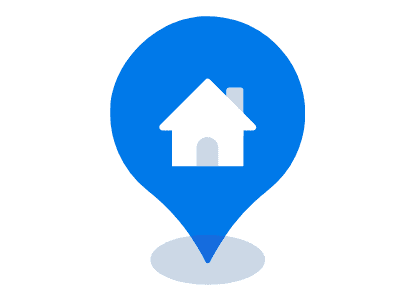CALL TODAY! 330.335.7276

Your Guide to VoIP
A Guide to Voice Over Internet Protocol
Think about how many calls your office takes in a single day. Office managers and front desk teams are constantly answering the phone, routing calls to the right person. Your sales reps are spending a good chunk of their day on the phone as well- chatting with prospects and entering their information into a CRM. When you incorporate a solution like Voice over Internet Protocol (VoIP) into your company’s communication systems, everyone from the top down will see immediate advantages: time savings, productivity increases, and simplified business processes, to name a few.
VoIP's advanced telecom solutions are used by everyone from small-business owners to Fortune 500 companies. Since VoIP allows companies to streamline their communication systems while enjoying lower costs, it has become a top-rated solution for those looking to update their phone service and increase their capabilities. This guide will discuss what VoIP is, how it works for your business, VoIP integrations, and how VoIP can benefit K-12 schools.
%20(1)-png.png?width=513&name=VoIP%20Basics%20At%20a%20Glance%20Infographic%20(2)%20(1)-png.png)
What is VoIP?
A VoIP phone, or Voice over Internet Protocol (VoIP), is a technology that allows you to make phone calls (voice calls) over the internet instead of a regular phone line.
Because VoIP utilizes digital connections instead of analog connections, national and international companies alike can enjoy lower costs and increased capabilities. Depending on the type of VoIP services, calls may work on your computer alone, while some allow you to use a traditional phone line with a connected VoIP adapter.
How Does VoIP Work?
VoIP technology takes analog voice traffic and turns it into compact, digitized packets that are sent over the internet instead of using regular phone lines. These packets can take many different paths to reach their final destination. Once there, they are automatically unpacked and converted to clear audio.
This process is different from standard phone systems, where one call creates a dedicated connection during the entire conversation. Instead, VoIP generates a non-dedicated connection only long enough to send short bursts of information.
Who Invented VoIP?
Several individuals are credited with creating the patents behind VoIP. Dr. Marian Croak is among those credited with the groundbreaking technology that allows people to communicate through audio and video over the internet. Marian holds a Ph.D. in quantitative analysis from the University of Southern California and has spent decades working to transform how people use the internet.
Dr. Croak has over 200 patents in areas around VoIP, many of which laid the groundwork for how we use the internet today. Dr. Croak is now a VP at Google, where she works on the advancement of responsible AI.
How Can VoIP Benefit Your Business?
Excellent customer service is essential to your business. According to American Express, 33% of Americans say they’ll consider switching companies after a single instance of poor service. While some elements are out of the companies control, the phone system shouldn’t be one of them. A reliable VoIP system means that customers get to the correct representative faster through automated call routing and that your reps can take calls even when they are on the road or out of the office.
Excellent customer service not only helps you close new sales but also (and arguably more importantly) retain current customers, who are more valuable than you may think. For instance, you are around 50% more likely to make a sale to an existing customer than to close with a new prospect. A VoIP system can help increase the productivity of your entire team, utilizing advanced features like CRM integrations, on-hold support, and sophisticated video conferences with dispersed teams, all without leaving a VoIP interface.
→VoiP Helps businesses with:
.png)
LOWERing COSTS
The rising cost of copper contributes to a higher per-line cost, making traditional phone lines and dial tone services more and more expensive to maintain. An IP-based system uses networks to handle voice traffic, meaning it is cheaper
to install and more affordable to scale than traditional systems.
It is no longer necessary to wait for a technician to physically come to a location to add a new phone line. Updating your phone system is now as simple as creating a support ticket, providing substantial cost savings for companies.

Integrated Collaboration for a Hybrid Workforce
In a post-pandemic world, more and more businesses opt to allow their employees to work from home. VoIP systems enable businesses to bring collaboration to distributed teams, teleworkers, and outsourced employees and contractors.
Tools like integrated instant messaging (IM), audio conferencing, and web conferencing are critical, if not mandatory, for seamless collaboration across cross-functional teams.

Preventing Abandoned Calls
and Lost Revenue
Each year, companies lose out on profits due to abandoned calls. Abandoned calls are missed opportunities to build loyalty and trust with your customers or prospects.
A unified call management platform provides advanced features that minimize the risk of abandoned calls during high-volume periods. Advanced features may include remote log-in methods (allowing agents to work from home or on the road) and advanced features like instant messaging, presence awareness, and video conferencing.

Simpler Technology = Better ROI
Did you know that the US spends an estimated $1.3 trillion year on IT solutions? And nearly 70% of those initiatives don't succeed? That's $900 billion spent on systems that miss the mark. Complexity in IT does not always mean sophistication. Simpler technology means less maintenance and support costs. IP-based systems in a simplified environment help boost sales and productivity, improve efficiency, and lower the total cost of ownership.

Automated Notification Integrations
The best business tools are the ones that work flawlessly in the background. VoIP phones can be programmed for everything from emergency event notifications to school bell tones and broadcasts.
Automated notifications mean more efficient emergency preparedness, cost savings, and effective employee and customer communication when it matters the most.

STRONGER OUTGOING COMMUNICATION
Businesses responsible for making notification and reminder calls often saddle their employees with a monotonous task that could be automated with VoIP. Automated bulk calling may depend on the season or other factors and may not require a full-time employee or a dedicated call center.
A Unified Communications system allows companies to make tens of thousands of individual calls each day, with real-time reporting and professional service.
How to Choose a VoIP Business Phone System – Step by Step Guide
There is a dizzying array of options out there for businesses attempting to choose their next phone system. Perhaps you’re looking for a ‘team’s phone system,’ or you’ve been overwhelmed by the results of your 'business phone systems near me' search. Regardless, it's essential to ask the right questions of a phone provider during your research. Take a look at the following questions to help you navigate your choices and put your business in a position to win with your next phone system deployment.
Step 1. To cloud or not to cloud?
Answering this initial question will quickly narrow your scope of options. One of the most critical factors that can start to steer your decision-making is: do you want to own the hardware and software your phone system runs on, or would you like someone else to run it all for you?
There are pros and cons to both deployments.
In an on-premise deployment, you have more control over the environment, when maintenance is done, what customizations can be made, and how the system is designed. It also makes you responsible for maintaining the system, supporting it and the initial capital costs are higher than a hosted system. This can be an excellent choice for companies that prefer cap-ex costs, enjoy the flexibility benefits of owning the system and have the skills or the support to run their system.
In a hosted deployment, the pricing is typically a per-user monthly cost. Should I Move My Communications to the Cloud? All the software upgrades, maintenance, and support are generally included in that price. Licenses are commonly offered in bundles depending on the features your users may require. You do not have access to the underlying system, but you may have self-service options to onboard new users, set up call flow, and do other essential tasks. These deployments can shine for small businesses or businesses with many remote employees or many small offices. Because the system is designed to be available over the internet, a geographically diverse workforce can be a natural fit. These can also become more expensive as the number of users grows.
Step 2. Determine the Features Your Business Requires in a Phone System
If you've outgrown your current phone system, or it has become outdated and cumbersome to manage, it is crucial to define what you WISH your phone system could do. Modern VOIP systems can integrate with many parts of your business. If your business depends on a suite of software, why not see how your phone system could enhance those systems and make your business flow intelligently and more efficiently.
Questions to consider:
- Where do my employees need to work? Home, office, on the road?
- Are there opportunities for my phone system to enhance my business or my interactions with my customers?
- Do I want video conferencing, messaging, etc., or just a phone on a desk?
- How does my phone system enable my remote workers and provide business continuity?
Step 3. Pricing
It’s important to know what you’re going to pay. However, there may be some non-obvious questions to ask to get the complete picture.
| On-premise Model | Hosted Model |
| For the features I want, what licensing do I need? | For the features I want, what licensing do I require? |
| What is the support or software assurance fee? | Are there any pricing tiers? Can I pay less per user with more users? |
| What is the cost of performing upgrades to keep the system current? | Can I choose not to pay for features I do not want/need? |
| Do I have the skills, or can I contract the necessary skills to maintain the system? What is the estimated cost for that? | If the system goes down, am I entitled to credits? What are the parameters of this? |
| If the company grows or downsizes, can costs be adjusted? | Is support included? What are the support SLAs? |
Step 4: Consider the Future of Interactions
AI is changing nearly every piece of technology we interact with daily. Phone systems are becoming more and more automated and can lower staffing costs and higher customer satisfaction. Suppose you are running a business that serves considerable inbound call volume. Why not investigate how your next phone system can make it easier for you to serve your customers or even for them to serve themselves?
Step 5: Drive it before you buy it.
Especially in the hosted model, providers may be able to set up a proof-of-concept system for you in the hopes of being your system of choice. Whether you have decided on an on-premise or hosted model, it is essential to work with a partner, vendor, or integrator that looks to understand your business and can help you achieve the best result.
How Can VoIP Help K-12 Schools?

When you think of VoIP, perhaps high-rise office buildings come to mind. Maybe bustling rows of employees working in cubicles. But VoIP has many uses beyond downtown office buildings. One of the fastest-growing segments to embrace VoIP technology is K-12 school districts. According to the National Center for Education Statistics, the average high school in the United States has more than 700 students, while primary and middle schools average 446 and 595 students, respectively.
Between students, administrators, faculty, and parents, communication between these groups are more critical than ever. With VoIP technology, school administrators and IT directors no longer have to wait for vendor support to make minor changes and upgrades to the system. VoIP systems can have an immediate, measurable effect on how school districts function, leading to organized communication across all facets of the school district. These modern systems allow districts trapped by legacy phone systems to tailor the solution to their needs, saving time and money in the process.
1. Improves Productivity and Enhances Communication Between Employees & Faculty
Facilitating streamlined communication between educators and administrators is crucial to holistic learning outcomes for students and teachers alike. Outdated phone systems do not lend themselves to modern productivity expectations. With a VoIP system, teachers and other facility members can place calls seamlessly to their colleagues in other schools or campuses without hassle. Plus, features like auto-attendant mean Administrative Assistants no longer need to operate a manual switchboard or facilitate the transfer of calls between campuses and administrative buildings.
2. it COntains Innovative Features to Support Distance Learning
2020 taught us that distance learning is, in fact, a viable option. But beyond pandemic-related challenges, VoIP integration in the classroom provides unique learning opportunities for students of all ages. If weather conditions in rural areas do not permit students to travel to school, video conferencing may make attendance easier. Video conferencing can also be used for ancillary activities, like foreign language classes or hosting guest speakers from other countries.
3. Allows for Streamlined Parental Notification
VoIP systems allow for both easy dialing and contact management between teachers and parents. School districts utilize VoIP to alert parents when their child has missed class, has a student-teacher conference, or when the school district has called a snow day.
4. Voip Can Double as Integrated Bell Tones
Purchasing a new system solely for integrated bell tones can be costly. With the proper integration solution, a VoIP system can double as a school bell tone. For some schools, a bell tone integration alone may be worth the switch!
5. Enhances School Safety
According to surveyed teachers, 7% of 4th-grade students attend schools that are 'less than safe and orderly. Outdated and cumbersome phone systems are no good in an emergency. VoIP systems contain intuitive interfaces and embedded emergency notifications, making it fast and easy to send and receive important messages and alerts.
→Additional Resources for School Administrators
.png)
K-12 VoIP
Case Study
An Ohio public school district undergoes comprehensive voice communication to achieve stellar results.
[Read More]
%20(1)-1.png)
|
How Collaboration Tools Build Smarter Schools [Read More] |
%20(2).png)
API Integration Helps K-12 Schools Get More From Existing Tools
How does API integration help children in the classroom and schools exceed parent expectations?
[Read More]
Top Frequently Asked Questions About VoIP
Think about how many calls your office takes in a single day. Office managers and front desk teams are constantly answering the phone, routing calls to the right person. Your sales reps are spending a good chunk of their day on the phone as well- chatting with prospects and entering their information into a CRM. When you incorporate a solution like Voice over Internet Protocol (VoIP) into your company’s communication systems, everyone from the top down will see immediate advantages: time savings, productivity increases, and simplified business processes, to name a few.
How Reliable
|
What’s the best type of phone to
|
What should a VoIP implementation
|
Does VoIP work if the
|
Can I choose my
|
Can my business get
|
COPYRIGHT 2024 BUSINESS COMMUNICATION SPECIALISTS. ALL RIGHTS RESERVED.



